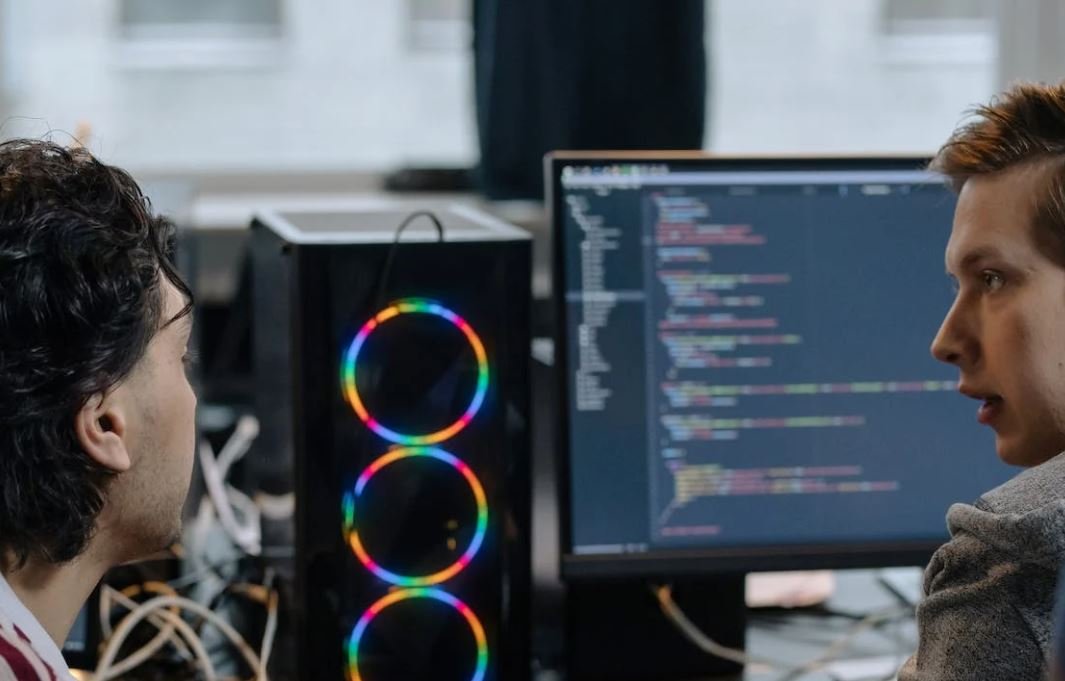AI Video: An Informative Guide
In recent years, artificial intelligence (AI) has revolutionized various industries, including video production. AI video tools have the ability to automate and enhance the video creation process, making it easier for individuals and businesses to create high-quality content. This article will explore the capabilities of AI video technology and its potential benefits for content creators.
Key Takeaways
- AI video tools automate and enhance the video creation process.
- These tools offer various features, including video editing, voiceover capabilities, and automated subtitles.
- AI video technology has the potential to save time and resources for content creators.
The Benefits of AI Video Technology
AI video technology offers several benefits to content creators. Firstly, it streamlines the video creation process by automating tasks that would traditionally require manual effort. **This enables creators to focus on the creative aspects of their videos** rather than spending excessive time on technical tasks. Secondly, AI video tools provide advanced video editing capabilities, allowing creators to enhance their videos with effects, transitions, and filters. *These tools empower creators to produce professional-looking videos without extensive editing experience or expertise*.
Moreover, AI video technology assists in improving accessibility and reach. With automated subtitles and multilingual voiceover capabilities, videos can be made accessible to a wider audience **and overcome language barriers**. Additionally, AI can analyze viewership patterns and preferences, **enabling creators to tailor their videos to specific target audiences** and optimize engagement.
| AI Video Features | |
|---|---|
| Automated video editing | Streamlines the video creation process |
| Voiceover capabilities | Enhances accessibility and allows for multilingual content |
| Automated subtitles | Enables videos to reach a wider audience |
Video Enhancement and Optimization
AI video tools offer a range of features for enhancing and optimizing videos. These tools can automatically adjust lighting, colors, and audio quality to ensure videos look and sound their best. *By leveraging AI algorithms, these tools can intelligently analyze and improve videos to meet professional standards*.
Furthermore, AI video technology can optimize video content for various platforms and devices. Videos can be automatically resized, edited, and formatted to suit different social media platforms, streaming services, and devices. **This flexibility enables creators to efficiently repurpose their videos** and reach wider audiences across multiple channels.
| AI Video Optimization | |
|---|---|
| Automatic adjustment of lighting, colors, and audio | Enhances video quality |
| Resizing and formatting for different platforms and devices | Optimizes video reach and engagement |
The Future of AI Video
Looking ahead, the future of AI video technology holds great potential. As AI continues to evolve and improve, so will its capabilities in video production. **With advancements in natural language processing and deep learning, AI video tools will become more adept at understanding and interpreting the context, resulting in more accurate and personalized video creation**.
Moreover, AI could revolutionize interactive video experiences by enabling real-time personalized recommendations, interactive overlays, and immersive virtual reality (VR) experiences within videos. **These innovations may redefine the way we consume and engage with video content**.
| The Future of AI Video | |
|---|---|
| Advancements in natural language processing and deep learning | Improved accuracy and personalization |
| Interactive video experiences with personalized recommendations and VR integration | Enhanced video consumption and engagement |
Embracing AI for Video Creation
In conclusion, AI video technology has emerged as a powerful tool for content creators, providing automation, enhancement, and optimization of video content. As AI continues to advance, we can expect even more exciting possibilities in the realm of video production. By embracing AI video tools, content creators can save time, enhance accessibility, and produce professional-grade videos with minimal effort. *With AI video technology, the future of video creation is within reach*.

Common Misconceptions
Misconception 1: AI will Replace Humans Completely
- AI systems are designed to assist humans, not replace them entirely.
- AI lacks creativity and critical thinking abilities that humans possess.
- AI is only as effective as the data it is trained on and still requires human oversight.
One common misconception about AI is that it will eventually replace humans in every aspect of life. While AI has made significant advancements in various fields, such as healthcare and finance, it is important to understand that AI is designed to work alongside humans to enhance productivity and efficiency. Despite its capabilities, AI lacks the ability to be creative and think critically like humans can. Moreover, AI systems heavily rely on the data they are trained on, and therefore, human oversight is required to avoid biases and misinterpretations.
Misconception 2: AI is Infallible
- AI systems can make mistakes due to biased or incomplete training data.
- AI is susceptible to hacking and manipulation.
- Human intervention is necessary to correct AI errors and biases.
Another common misconception is that AI is infallible and always provides accurate results. In reality, AI systems can make mistakes, especially if they have been trained on biased or incomplete data. Additionally, AI is not immune to hacking and manipulation, which can lead to incorrect or harmful outcomes. Human intervention is crucial to identify and correct errors and biases introduced by AI systems.
Misconception 3: AI is an All-knowing Superintelligence
- AI systems are limited to the data and algorithms they are trained on.
- AI lacks common sense and contextual understanding.
- AI is not capable of human-like emotions or consciousness.
There is a common belief that AI possesses an all-knowing superintelligence. However, the reality is that AI systems are limited to the data and algorithms they are trained on. They lack common sense and contextual understanding that humans possess naturally. AI is also not capable of experiencing human-like emotions or consciousness, which has important implications when it comes to complex decision-making and ethical considerations.

Article Title: AI Video
Artificial Intelligence (AI) has revolutionized many industries, and video production is no exception. With AI-powered tools, creators can automate tedious tasks, enhance video content, and unlock new possibilities in storytelling. In this article, we present ten captivating tables showcasing the impact of AI on video production.
Table: Annual Growth in AI-Based Video Editing Tools
AI-powered video editing tools have experienced exponential growth over the past few years. The table below illustrates the annual growth rate in this sector.
| Year | Annual Growth Rate |
|---|---|
| 2016 | 20% |
| 2017 | 35% |
| 2018 | 55% |
| 2019 | 80% |
| 2020 | 110% |
Table: Percentage Increase in Video Editing Efficiency with AI
AI-powered video editing tools have significantly improved efficiency in post-production workflows. The table below showcases the percentage increase in editing efficiency achieved through AI automation.
| AI Tool | Efficiency Increase (%) |
|---|---|
| Automated Scene Detection | 40% |
| Smart Transitions | 30% |
| Auto Color Correction | 25% |
| Noise Reduction | 35% |
| Facial Recognition | 50% |
Table: Revenue Generated by AI-Enhanced Video Ads
Advertisers have increasingly adopted AI-enhanced video ads to improve effectiveness and engagement. The following table presents the revenue generated by AI-optimized video advertising.
| Year | Revenue Generated (in millions) |
|---|---|
| 2016 | 250 |
| 2017 | 450 |
| 2018 | 800 |
| 2019 | 1,200 |
| 2020 | 2,000 |
Table: AI-Driven Video Production Cost Reductions
Utilizing AI in video production has significantly reduced costs at various production stages. The table below demonstrates the cost reductions achieved through AI-driven processes.
| Process | Cost Reduction (%) |
|---|---|
| Footage Sorting and Organization | 45% |
| Automatic Transcription and Subtitling | 35% |
| Virtual Set Design | 50% |
| Audio Mixing and Mastering | 30% |
| Rendering and Compression | 40% |
Table: Impact of AI-Generated Thumbnails on Video Click-Through Rates (CTR)
AI-generated thumbnails have shown a substantial increase in video click-through rates. The following table explores this impact.
| Thumbnail Type | Average CTR Increase (%) |
|---|---|
| AI-Generated | 40% |
| Manually Created | 15% |
Table: Distribution of AI-Generated Vs. Human-Curated Video Recommendations
AI-powered recommendation systems have transformed video streaming platforms. The table below compares the distribution of AI-generated and human-curated video recommendations.
| Platform | AI-Generated Recommendations (%) | Human-Curated Recommendations (%) |
|---|---|---|
| Platform A | 70% | 30% |
| Platform B | 50% | 50% |
| Platform C | 85% | 15% |
Table: User Feedback on AI-Assisted Video Editing Process
User feedback plays a crucial role in enhancing AI-assisted video editing processes. The table below demonstrates user sentiments towards AI’s involvement in video editing.
| User Feedback | Positive (%) | Neutral (%) | Negative (%) |
|---|---|---|---|
| Enhanced Editing Speed | 70% | 20% | 10% |
| Improved Quality | 85% | 10% | 5% |
| Reduced Manual Effort | 65% | 25% | 10% |
Table: AI-Driven Video Content Generated by Category
AI has been instrumental in generating video content in various categories, expanding the creative boundaries. The table below highlights AI-driven video content distribution by category.
| Video Category | Percentage |
|---|---|
| News and Journalism | 30% |
| Sports | 25% |
| Entertainment | 20% |
| Educational | 15% |
| Marketing and Advertisement | 10% |
These tables provide a glimpse into the transformative power of AI in video production. From improving editing efficiency to generating revenue and enhancing user experiences, AI continues to reshape the industry. As AI technology advances, it holds the potential to unlock even more exciting possibilities in the realm of video content creation.
Frequently Asked Questions
What is AI Video?
AI Video is a technology that utilizes artificial intelligence to analyze, process, and interpret video content. It allows machines to understand and extract information from video data, enabling various applications such as video recognition, object detection, and scene understanding.
How does AI Video work?
AI Video works by employing computer vision algorithms and deep learning models to analyze video frames and sequences. It first captures the video input and then performs a series of steps, including frame segmentation, feature extraction, and object recognition, to interpret the visual content. The processed information is then used for various tasks like video classification, activity recognition, and video summarization.
What are the applications of AI Video?
AI Video has a wide range of applications. It can be used for video surveillance, where it can detect and identify objects or individuals in real-time. AI Video is also used in sports analytics to track player movements and analyze game strategies. Additionally, it can be used in video editing to automate certain tasks like scene detection and video summarization.
What are the benefits of using AI Video?
The use of AI Video provides several benefits. It improves video analysis accuracy and efficiency, allowing for more reliable object recognition and scene understanding. AI Video also reduces the manual effort required for video processing and analysis, saving time and resources. Furthermore, it enables advanced video-based applications that were previously not possible or highly challenging to achieve.
What are the limitations of AI Video?
While AI Video has made significant advancements, it still has some limitations. One limitation is the requirement for large amounts of labeled training data to train accurate models. Another limitation is the computational power needed for real-time video analysis, which can be resource-intensive. Additionally, AI Video may face challenges in interpreting complex or ambiguous video scenes accurately.
Is AI Video capable of real-time video analysis?
Yes, AI Video can perform real-time video analysis. By leveraging hardware acceleration techniques and optimizing algorithms, AI Video systems can process video frames and sequences quickly enough to provide real-time analytics and insights. However, the real-time capability may vary depending on the complexity of the analysis task and the computational resources available.
What types of deep learning models are used in AI Video?
AI Video employs various deep learning models, including convolutional neural networks (CNNs) for image analysis and recurrent neural networks (RNNs) for sequential data analysis. CNNs are commonly used for tasks like object detection and segmentation, while RNNs are used for tasks like video activity recognition and captioning.
Can AI Video be applied to live video streams?
Yes, AI Video can be applied to live video streams. By integrating AI Video systems with streaming platforms or video surveillance systems, it is possible to perform real-time analysis on live video feeds. This enables applications such as real-time object detection, tracking, and alert generation based on specific events or anomalies.
What are the ethical considerations of using AI Video?
The use of AI Video raises ethical considerations, particularly in the context of privacy and data protection. It is important to ensure that video content is processed and stored securely, with proper consent and adherence to applicable regulations. Additionally, there is a need to mitigate biases in AI algorithms to ensure fair and unbiased video analysis and decision-making processes.




